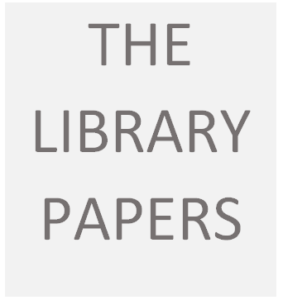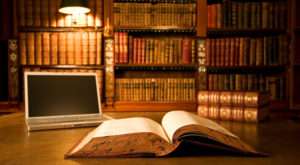Assignment 4: Annotated Bibliography
The Collection
This collection was inspired by Module 9: Information and Concept Literature across the Curriculum, and by Young, Moss and Cornwell’s article The Classroom Library: A Place for Nonfiction, Nonfiction in Its Place. In that article, the authors suggest teachers should create sets of texts in their classroom libraries that include both fiction and nonfiction materials: “These text sets should include books from a variety of genres including picture books, realistic and/or historical fiction, biography, information titles, poetry, and perhaps traditional literature” (p. 6).
This seems like an excellent way to help students expand their understanding of nonfiction texts at all levels, so I want to further explore the idea, not just in classroom libraries, and not just at the elementary level. To that end I have created three collections—nonfiction texts, fiction novels, and graphic novels. All of the novels, both print and graphic, are loosely connected to the topics of the nonfiction books.
This is a preliminary sketch of what I hope this collection will eventually become. Because it is a preliminary exploration, I have aimed for as broad a coverage as possible. I have tried to find suitable texts at all levels, but there are gaps: there is not much here at all for primary readers, the novels are targeted at intermediate and secondary students, but among the nonfiction books and graphic novels are books suitable for lower elementary students as well.
One of the interesting things you can see in this collection is the way story-telling in general and publishing in particular, are changing: although they are still important, traditional print novels are no longer the dominant vehicle for telling stories; ‘authors’ are not always what they used to be; the lines between the story teller and the audience are becoming ever more blurred.
I have divided this curation into four sections—nonfiction, fiction novels, graphic novels, and other media. Each section has its own Works Cited list at the end of the section.
Section 1: Five Information Books
The topics of the books in this collection can be classed as: the environment, history, artificial intelligence, gaming, and privacy.
Works Cited (Click Here)
Works Cited
Diamond, Jared M. Collapse: How Societies Choose to Fail or Succeed. New York, Penguin, 2011.
Gonick, Larry. The Cartoon History of the Universe, Vol. 1: from the Big Bang to Alexander the Great. New York, Doubleday, 1990.
Harari, Yuval Noah. Homo Deus: a History of Tomorrow. S.l., Harpercollins, 2017.
Miller, Megan. Hacks for Minecrafters: Mods: The Unofficial Guide to Tips and Tricks That Other Guides Won’t Teach You. New York: Sky Pony, 2016. Print.
Schneier, Bruce. Data and Goliath: the Hidden Battles to Collect Your Data and Control Your World. New York, W.W. Norton & Company, 2016.
Section 2: Five Novels
All of these novels deal with the impact of science and technology on our society in various ways. They are all categorized as science fiction. Science fiction is set in an imaginary space and/or time, but is different from fantasy in that it avoids the supernatural. It can be realistic—all of the books in this collection would be considered realistic—but need not. Writers often use this genre to explore the consequences of current cultural issues, which include but are not limited to technological ones, by contrasting the future with the present. This contrast can be explicit or implicit.
Works Cited (Click Here)
Works Cited
Asimov, Isaac. I, Robot. New York, N.Y., Bantam Books, 2004.
Atwood, Margaret. Oryx and Crake. New York, Anchor Books, 2004.
Eggers, Dave. The Circle. New York, Vintage Books, 2014.
Howey, Hugh. Wool. (Silo Saga, #1). New York, Simon & Schuster Paperbacks, 2013.
Simpson, David. Sub-Human. Part 1, North Charleston, SC, CreateSpace Independent Publishing, 2013.
Section 3: Ten Graphic Novels
In this section, I have looked at graphic novels only, as distinct from picture books. Unlike the print novels, I don’t think they could all be called ‘science fiction.’ Maybe ‘speculative’ fiction, or even ‘science fantasy’ might be a better categorization, since several of them do have supernatural aspects: Lunch Lady and the Cyborg Substitute, The Lost Hero, Nimona, and The Last Airbender. One of these books, In Real Life, should be classified as realistic fiction (with a science theme). And one of them—Archangel #1—is a comic book rather than a novel, although it will be published as a novel August of this year. Another—Rabbit Island—is a short story from a collection. Finally, some of these books began life in other forms—The Private Eye and Nimona as online web comics, The Last Airbender as an anime-like American TV series (from 2005-2008). And The Lost Hero and Ender’s Game as traditional print novels.
This collection shows the enormous variety of stories and styles that exist—the popularity of graphic novels has created new opportunities for talented illustrators and designers as well as writers. This form is changing how I think of ‘authorship’: some of these books are written and illustrated by one person—Nimona, Rabbit Island, Lunch Lady and Here—while others are the work of at least two and often more creators. The illustrator, colorist, letterer all contribute to telling the multi-modal story. Even the role of the actual writer can be different–in the same way that screen writers turn novels into film scripts, there is often a different writer for the graphic novel, or an additional writer, who can translate the work into this medium if the story previously appeared in a different form, like a print book, or movie or TV show.
But as this collection also shows, alongside established publishers and writers, and alongside more complex productions, there is still room for newcomers, for author/illustrators, for self-publishing of hard copies, or web-only publishing. It is a creative dynamic field right now–it may be the golden age of the graphic novel.
Works Cited (Click Here)
Works Cited
Doctorow, Cory, and Jen Wang. In Real Life. New York, First Second, 2014.
Gibson, William, and Butch Guice. William Gibson’s Archangel. San Diego, CA, Idea & Design Works, 2017.
Parker, Jake. Rabbit Island. In Explorer: the Lost Islands: Seven Graphic Stories. Kazu Kibuishi, ed. New York, Amulet, 2013.
Krosoczka, Jarrett. Lunch Lady and the Cyborg Substitute. New York, Alfred A. Knopf, 2009.
McGuire, Richard. Here. New York, Pantheon Books, 2014.
Riordan, Rick, et al. The Lost Hero. Los Angeles, Disney Hyperion, 2014.
Stevenson, Noelle. Nimona. Harpercollins Childrens Books, 2015.
Vaughan, Brian K., et al. The Private Eye. Berkeley, CA, Image Comics, 2015.
Yang, Gene Luen. Avatar The Last Airbender: North and South. S.l., DARK HORSE COMICS, 2017.
Yost, Christopher, et al. Ender’s Game Graphic Novel. New York, NY, Marvel, 2013.
Section 4: Other Media
Works Cited (Click Here)
Works Cited
Gear, Adrienne. Reading Power. Markham, Ontario, Pembroke Publishers, 2015.
“Great Graphic Novels for Kids.” Good Ok Bad :: Great Graphic Novels for Kids, goodokbad.com/kids/. Accessed 27 Mar. 2017.
Green, Brian. “The Elegant Universe Part 1 – Einstein’s Dream.” YouTube, 10 Aug. 2014, www.youtube.com/watch?v=zRDP5pOiN1c. Accessed 27 Mar. 2017.
McCloud, Scott, and Mark Martin. Understanding Comics: the Invisible Art. New York, NY, William Morrow, an Imprint of HarperCollinsPublishers, 2014.
National Science Teachers Association – NSTA. “Books & Resources.” Outstanding Science Trade Books for Students K-12: 2016, www.nsta.org/publications/ostb/ostb2016.aspx. Accessed 27 Mar. 2017.
Wall E. Disney, 2008



